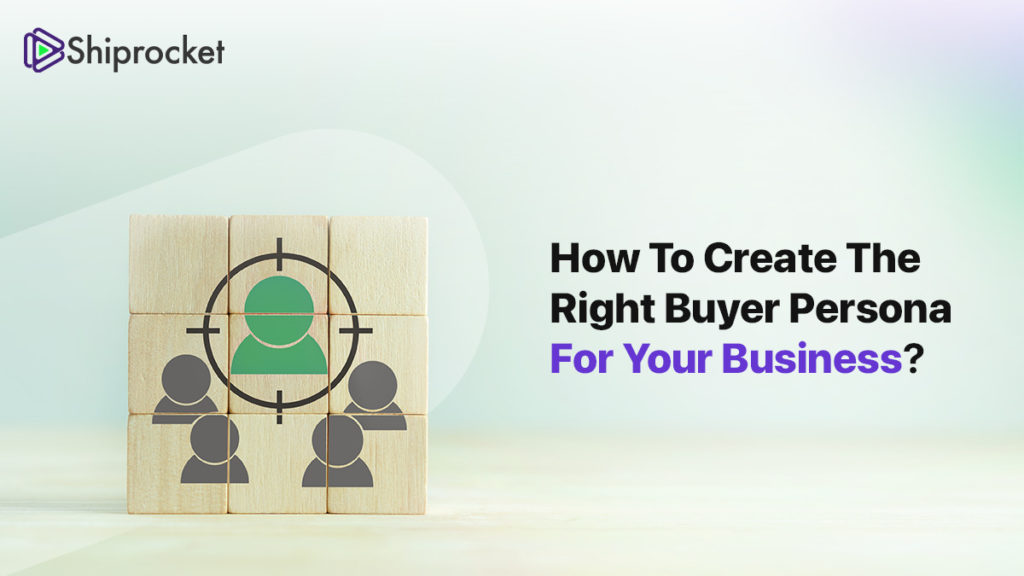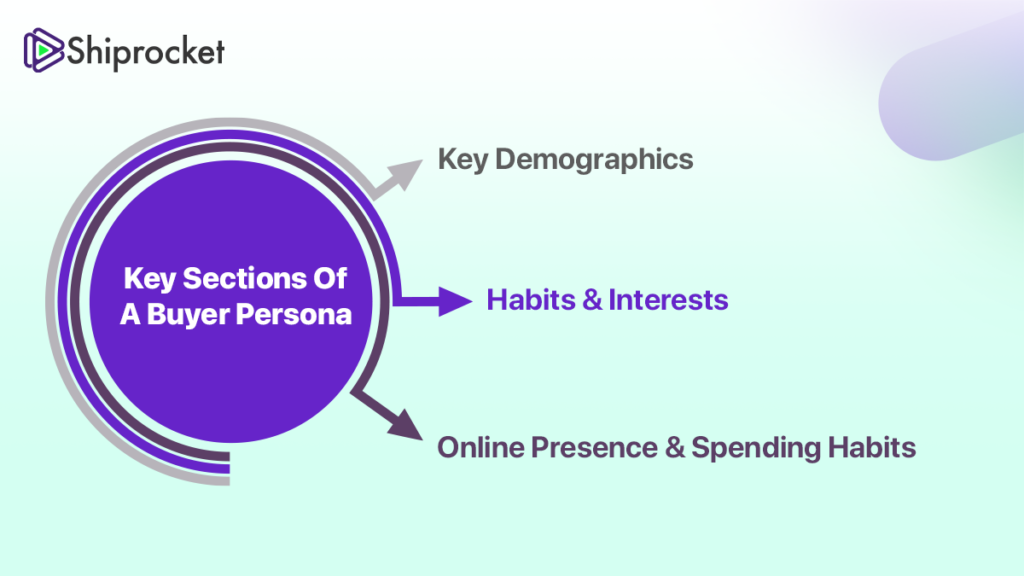eCommerce eCommerce 7 min read
How To Create The Right Buyer Persona For Your Business?
🕒 August 22, 2022 by Reham Omar - 7 min read
If your business is in eCommerce, we can confidently say that reaching out to your potential customers and turning them into buyers is your number one priority, but have you wondered how to better understand your eCommerce customers? What do your buyers’ personas have to do with your eCommerce business? By understanding the different personas of your target customers, you can design your marketing and sales strategies to better meet their needs and influence their purchase decision.

This can be done by developing a right buyer persona. It is a fantasy representation of your perfect customer. By creating a buyer persona, you can better understand what motivates your customers and how to attract them. In this article we will clarify the definition of a buyer persona and its elements more deeply, along with some tips on how to identify it in eCommerce.
What Is A Buyer Persona?
Customer or buyer persona (also known as consumer persona) is a detailed fantasy representation of your core customers based on real data and market research. Building original models for perfect buyers helps you understand them well enough to engage better with them and motivate them to buy. Buyer persona is also useful in informing important decisions about marketing efforts, channels, messages and website content. and the overarching big picture strategy.
Why Does Your Business Need Buyer Personas?
Customers are impatient with unpersonalized marketing. As general email marketing or bad online shopping experiences for example can have a significant negative impact on companies of any size. A recent study by Accenture found that nearly half of consumers left certain stores – and bought from elsewhere – because the experience was poorly coordinated, customized & personalized.
It is not surprising that general marketing messages do not have a significant impact on consumers. So, having a buyer persona is an effective way to launch compelling and relevant campaigns for your target customer as it enables your marketing team to identify the features or initiatives your business needs to attract potential customers.
Key Components Of Client Personality
The most important thing to consider when creating a buyer persona is that it is not just a list of characteristics. There must be a great space for flexibility when it comes to what can be included in. Here are some key Components for your buyer persona:

Demographic Factors
Google Analytics allows you to view demographic data such as age, gender, and location. This information can be useful in creating different persons for your buyers. Depending on what you sell, different demographic information may be relevant. However, some of the factors each eCommerce business must consider are:
- Age
- Gender
- Geographical Location
- Income
- Educational Level
- Job Title
- Number of family members
While Google Analytics provides you with basic information about your customers. The advanced AI-segmentation tools allow you to segment your customers and to dive deeper into understanding their brand loyalty and preferences for your products. Using machine learning, you can understand your shoppers journeys and how the different elements on your website can affect the purchasing decision for different customer segments.
Habits & Hobbies
This section of the buyer’s persona looks at the different factors that may lead someone to make the purchase decision. It covers personal traits, habits, interests and other factors that can motivate them. These include:
- Short and Long Term Life Goals
- Values & beliefs
- Hobbies & habits
- Key Concerns & Problems
- Potential objections to your product
Online Presence & Spending Habits
This section is about how your e-store customer uses technology, spends their time online, and ultimately how they decide to spend their money online. You will use this section to find out where and how to reach your customer with the marketing content you will create. Here are the factors to be considered:
- Where do your customers go to get information online?
- What social media channels do they use (and how often)?
- How do they prefer to communicate, especially with brands and companies?
- How & where do they prefer to spend their money online?
- Where & how do they do shopping in general?
4 Simple Steps To Create Your Buyer Persona

Now that you know what a buyer persona looks like and why it’s so essential for any eCommerce business, it’s time to create your buyers’ personas. Follow these four steps to get to know your target customers better.
Collect Target Audience Data
Before you start establishing your buyer persona, make sure you do some research using Google Analytics as we mentioned earlier. This free tool can provide you with detailed information about your audience, such as “age”, “gender” and “interests.” If you integrate it with your online store, you can download reports about things like your customers’ media consumption and other details at all levels.
If your online store is running already, it is easy to access detailed information from your CRM software. If your online store is still new, don’t worry. Use “Twitter” or “LinkedIn” and other social media platforms popular to your customer base to gather more information. You can also use those sites’ advertising tools to estimate market size or explore individual pages and profiles.
Connect With Your Customers
Your customers’ feedback is important to learn more about your buyers’ personas more deeply. Listen to your target customers through a mix of interviews, telephone calls and surveys. Also talk with both current and potential customers. This will help you better understand their needs and desires.
If you are unable to know such information from your existing customers, you may need to provide incentives. For example, communicate with them through social networks such as LinkedIn and encourage them to participate by offering gift cards. It’s also good to search your customer service call records or sales calls if you have access to them. They can be great sources of information about your customers.
Segment Your Customers
You can segment your customers in a variety of different ways. First, identify data that will have the greatest impact on how you communicate with your audience. Find trends and commonalities among customers to help you build accurate personas for customers. For example, if a segment of customers say that the budget is a challenge for them to complete the purchase process, make sure that this feature is prominent in all the buyers’ personas they represent.
Create & Share Your Buyer’s Personas
It’s time to build your buyers’ personas! Collect all the main data and feedback, and fill in each section of your buyer persona. Then ask yourself: Does each persona have a different story? Are my ideal clients represented here? Do I know how to communicate with these customers? If the answer is yes, go on. Otherwise, reconsider your data so that you are confident that you have created full personas for all of your customers segments.
Depending on the size of your company, you may have a sales team and a marketing team. Give them the created personas and gather their feedback. And remember that buyers’ personas do change – just like real people, these buyer personas will evolve over time. So rethink your buyers’ personas as your company and customer base grow.
Summary
Understanding your buyer persona is key to developing a successful eCommerce strategy. It can help you create a personalized experience for them, thereby increasing loyalty and conversions.




